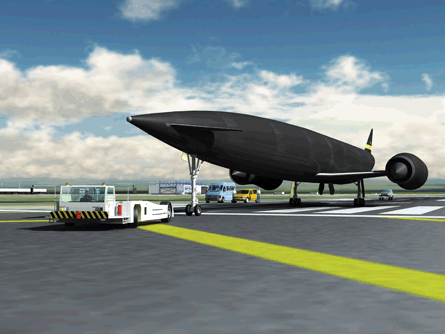Tests set to begin this month are hoped to validate an ambitious air cooling technology that Oxfordshire-based Reaction Engines believes will make possible single stage to orbit space planes and in-atmosphere hypersonic transport aircraft.
Reaction believes its runway take-off and landing reusable space plane concept - designed to put 12t into orbit, 10t to the International Space Station and as much as 6t to higher geostationary orbits - could be reality in as little as 10 years. But everything depends on the results of the imminent air cooler trials.
Skylon relies on Reaction's SABRE hybrid engine concept, which runs on liquefied oxygen and hydrogen in space, but "breathes" air from the runway until Mach 5.5, at which point it switches to rocket mode to reach orbital velocity, of about M25. And, the key to SABRE is an air pre-cooler designed to cool intake air so it can be compressed and injected directly into a rocket combustion chamber.
By doing this, Skylon would avoid having to carry liquid oxygen for much of the atmospheric part of its journey, hopefully achieving single stage to orbit performance and simplifying operations to cut recurring costs to $10 million per flight.
 |
|---|
© Reaction Engines |
The pre-cooler is made up of wound matrices of Inconel tubing, only 1mm in diameter but able to take a large temperature gradient across its very thin walls and internal pressures of 200bar without breaking. Metallurgical and manufacturing problems have delayed testing from the original summer 2011 timetable, but Reaction has received the 47 miles (75km) of tubing needed from its external suppliers, and the test section is nearly built and ready for full test runs. Despite the delays, the test date will still beat the deadline set by Reaction's contract with the European Space Agency.
The experiments involve mounting the pre-cooler ahead of a Rolls-Royce Viper jet engine to provide the necessary air flow. The cooling properties of this section can then be measured and proven - though using liquid nitrogen as a heat sink rather than liquid hydrogen, which will be used in a full-scale SABRE engine.
Most importantly, the experiments will be a proof of the firm's most secret innovation: a frosting control system that it is hoped will keep the air gaps between each of the tubes free of frost.
Totally new manufacturing and quality testing procedures have had to be developed for the very thin tubing that is at the heart of the heat exchanger technology. For example, a new machine had to be designed using Eddy currents measurement to find imperfections in the 40 micron thick walls of the Inconel matrix tubing. A further etching procedure was also devised that further thins the walls to a thickness of not much above 20 microns, while new brazing techniques were developed to attach this tubing to the cooler.
The pre-cooler would also enable a variant of the SABRE concept, called Scimitar, which is designed for atmospheric operation and would be the power behind a future hypersonic air transport. Reaction nozzle and injector technology is also key to the hypersonic air transport concept, promising to reduce NOx emissions.
As for more prosaic applications, Reaction also sees the pre-cooler design being used for heat exchangers in conventional gas turbine jet engines, an innovation the company expects could cut specific fuel consumption by up to 15%.
However, for such a device to be economically feasible for conventional jet engine applications, Reaction realises the cost of manufacturing each Inconel tube will have to be reduced dramatically; the full-sized version of the pre-cooler uses some 2,000km of this tubing.
- Additional reporting by Dan Thisdell
David Todd is a spaceflight analyst at Flightglobal's Ascend consultancy; he is also one of the original investors in Reaction Engines Limited and holds a small shareholding in the business.
Source: Flight International





























